Tag Archives:from the library
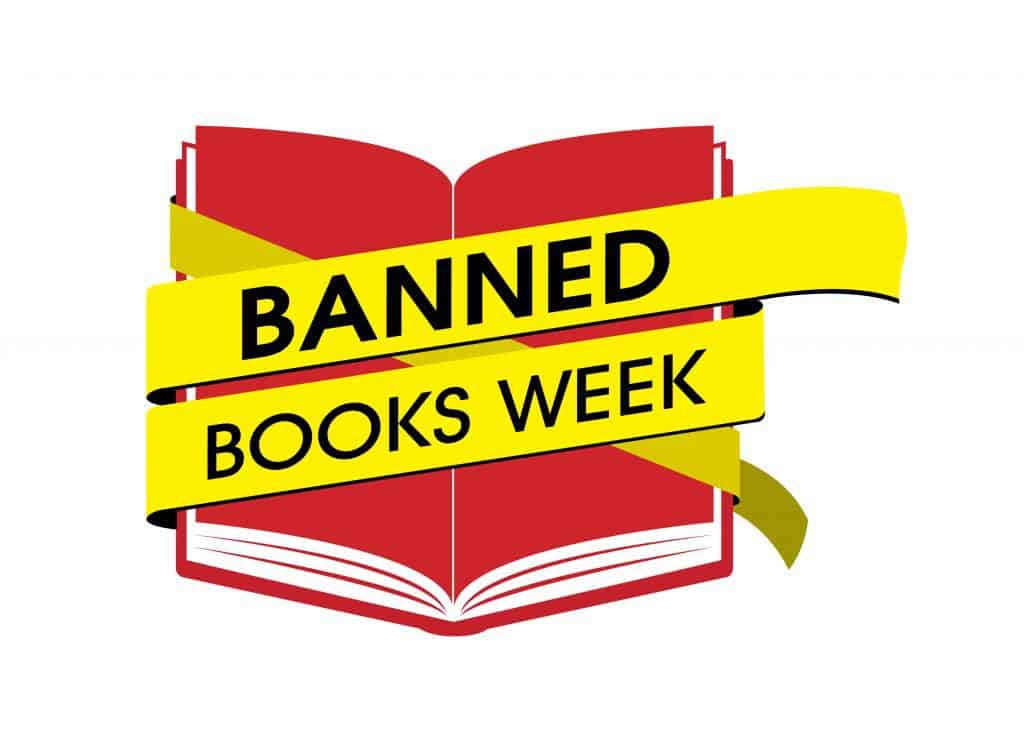
28
SepDon’t Read That!
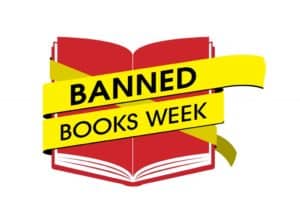 As Americans, we take a lot of our freedoms for granted. Other than yelling “Fire!” in a crowded theatre, we don’t even think twice about our right to say what we want when we want. We trust that law enforcement cannot enter our homes without a warrant, and we know that the freedom of religion is an ideal on which our country was founded.
As Americans, we take a lot of our freedoms for granted. Other than yelling “Fire!” in a crowded theatre, we don’t even think twice about our right to say what we want when we want. We trust that law enforcement cannot enter our homes without a warrant, and we know that the freedom of religion is an ideal on which our country was founded.
But imagine a reality in which we couldn’t read what we wanted. The freedom to write books of varying opinions and subject matter is protected by the First Amendment, under the freedom of speech. Have you considered that this extends to protect your freedom to read? Protecting everyone’s freedom to read what they want is a bedrock of librarianship, and it’s more of a constant concern than you might expect. There are frequent calls to censor books people don’t agree with or find objectionable in some way. If the move to censor a book is successful, it may be pulled from the shelves of schools, public libraries, and even booksellers.
A surge of book bans and challenges in the 1980s led to the banding together of people across the book trade to protect the freedom to read and draw attention to banned and challenged books, and thus Banned Book Week was born. Typically held the last week of September, Banned Book Week celebrates the most challenged books of the previous year, inspires advocacy around the need to protect our freedom to read, and highlights the value of free and open access to information. By focusing on efforts across the country to remove or restrict access to books, Banned Books Week underscores the harms of censorship.
Curious about the most challenged books of 2017? The American Library Association’s Office of Intellectual Freedom compiles lists of the most challenged books across the country. Last year, the Top Ten Most Challenged Books were (quoted directly from the bannedbooksweek.org website):
- Thirteen Reasons Why written by Jay Asher. Originally published in 2007, this New York Times bestseller has resurfaced as a controversial book after Netflix aired a TV series by the same name. This YA novel was challenged and banned in multiple school districts because it discusses suicide.
- The Absolutely True Diary of a Part-Time Indian written by Sherman Alexie. Consistently challenged since its publication in 2007 for acknowledging issues such as poverty, alcoholism, and sexuality, this National Book Award winner was challenged in school curriculums because of profanity and situations that were deemed sexually explicit.
- Drama written and illustrated by Raina Telgemeier. This Stonewall Honor Award-winning, 2012 graphic novel from an acclaimed cartoonist was challenged and banned in school libraries because it includes LGBT characters and was considered “confusing.”
- The Kite Runnerwritten by Khaled Hosseini. This critically acclaimed, multigenerational novel was challenged and banned because it includes sexual violence and was thought to “lead to terrorism” and “promote Islam.”
- Georgewritten by Alex Gino. Written for elementary-age children, this Lambda Literary Award winner was challenged and banned because it includes a transgender child.
- Sex is a Funny Wordwritten by Cory Silverberg and illustrated by Fiona Smyth. This 2015 informational children’s book written by a certified sex educator was challenged because it addresses sex education and is believed to lead children to “want to have sex or ask questions about sex.”
- To Kill a Mockingbirdwritten by Harper Lee. This Pulitzer Prize-winning novel, considered an American classic, was challenged and banned because of violence and its use of the N-word.
- The Hate U Givewritten by Angie Thomas. Despite winning multiple awards and being the most searched-for book on Goodreads during its debut year, this YA novel was challenged and banned in school libraries and curriculums because it was considered “pervasively vulgar” and because of drug use, profanity, and offensive language.
- And Tango Makes Threewritten by Peter Parnell and Justin Richardson and illustrated by Henry Cole. Returning after a brief hiatus from the Top Ten Most Challenged list, this ALA Notable Children’s Book, published in 2005, was challenged and labeled because it features a same-sex relationship.
- I Am Jazz written by Jessica Herthel and Jazz Jennings and illustrated by Shelagh McNicholas. This autobiographical picture book co-written by the 13-year-old protagonist was challenged because it addresses gender identity.
There’s an interesting and unintended consequence to banning books however. Prohibiting something gives it the allure of being taboo; telling people, especially teens, that they “can’t” do something only makes them want to do it more. Banning books can actually catapult them into popularity.
Everyone is entitled to their opinion, and choice of reading material is often a matter of taste. People who challenge books disagree with their content, opinions expressed, etc – and that’s fine. We’re never going to all agree on what constitutes offensive content, and what a boring world it would be if we only ever saw our own values reflected back to us. The problem doesn’t lie with differences of opinion, but instead with restricting others’ access to information and books they might want to read.
In a famous passage discussing Voltaire, historian Evelyn Beatrice Hall wrote, “I disapprove of what you say, but I will defend to the death your right to say it.” And librarians will continue to protect your right to read. Help us celebrate Banned Books Week 2018 this week, September 23-29. We have a display of banned books on the second floor – some of the titles might surprise you! – and we can help you find other titles you might be looking for.
Liz Reed is an Adult and Information Services Librarian at the Morrill Memorial Library in Norwood, Massachusetts. Read Liz’s column in the September 27, 2018 issue of the Norwood Transcript and Bulletin.
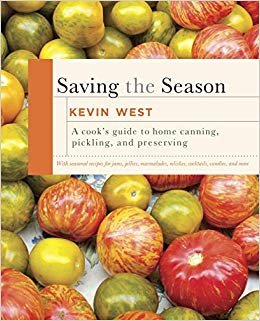
20
SepFall Flavors Sans Pumpkin Spice
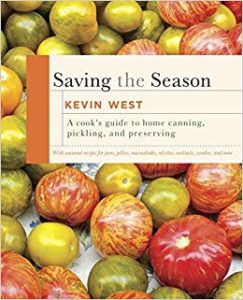 Last fall, I was unpacking the groceries from a trip to the market. My husband popped into the kitchen to “help” put the food away, a.k.a. survey my selections so he can plan what I refer to as his “snack-tivities” for the week.
Last fall, I was unpacking the groceries from a trip to the market. My husband popped into the kitchen to “help” put the food away, a.k.a. survey my selections so he can plan what I refer to as his “snack-tivities” for the week.
After a few minutes of cupboards opening, I heard him exclaim, “Ugh! Why would anyone buy this?!” I turned around, expecting him to be holding one of the weird veggies I buy without knowing what I’ll do with them, but nope, he’s holding a box of pumpkin spice Cheerios. I thought they looked good, but my husband thought I was trying to poison him. This was the moment that I learned that my husband hates almost all pumpkin spice flavored things.
He always ate my squash pie at Thanksgiving dinner, which has the same flavoring as pumpkin spice, so why this sudden hatred for this popular fall flavor? Apparently, the problem is over-exposure. Dunkin’s introduced a pumpkin muffin a few years ago, which I thought was a good fit. New Englanders have been eating spiced pumpkin bread for centuries, so why not make it muffin shaped? But the pumpkin spicing didn’t stop there. Now there are pumpkin spice Oreos, pumpkin spice tea, and pumpkin spice Peeps. Even I draw the line at pumpkin-y marshmallow chicks.
Still, I love warm flavors. Fall and winter are my favorite food seasons and my taste trends toward old fashioned. My favorite meals are the ones served from one giant roasting pan and heat up the whole house in their making. Give me apples, squash that will last months in a root cellar, cozy breads, and warm Indian pudding. Don’t get me wrong, I also enjoy a good avocado and egg sandwich- I am a millennial after all (barely), but if I knew it was my last meal, I would be ordering my grandmother’s Canadian boiled dinner followed by a gigantic slice of squash pie.
My husband is the opposite. He also likes warm flavors, if by warm, you mean HOT. He loves thermonuclear chicken wings, spicy and tangy fish tacos, and self-concocted barbecue sauces that make my eyes water. If I am an autumn/winter eater, he is all about summer flavors. I think that might be why he hates seeing pumpkin spice flavored everything lining the grocery store shelves- it is a signal that summer is over.
For my husband’s sake, I am trying to avoid pumpkin spice overload this autumn and am seeking out fresh fall flavors that won’t induce winter woes, but will still use the ingredients available from our local farms and orchards. Luckily, the library has more than a few books to help me.
The first book I found does less to celebrate the upcoming cooler weather and more to stretch the tastes of summer further. Saving the Season: a Cook’s Guide to Home Canning, Pickling, and Preserving, by Kevin West is a super book for gardeners and farm-share households. I am always scrambling in October to preserve the glut of late season tomatoes and other garden goodies practically falling off the tangle of vines that is my vegetable patch. This book gives options- tasty, tasty options.
The book that I am just loving right now is Dishing Up the Dirt: Simple Recipes for Cooking Through the Seasons, by Andrea Bemis. The author is a passionate farmer and has crafted recipes that take advantage of what her organic farms has on offer each season. She experiments with flavors in recipes like her beet, walnut and kale pizza or winter squash carbonara, but still includes new twists on classic recipes, like tomato sauce to use up the last of the season’s tomatoes, and sweet potato pie.
Another book that made my mouth water is America Farm to Table, by Mario Batali. Batali also takes on using local, seasonal ingredients to make yummy dishes that will please a crowd. He looks to towns and cities across the country for inspiration. I found that the recipes inspired by Vail, Colorado fit well with what my garden is producing and what is available at nearby farmers markets. The beef and chard meatballs were lick-the-plate-clean good.
Even with summer quickly fading away, I am hoping to ease the transition into fall for my anti-pumpkin spice husband with a few recipes from these great titles. Maybe I can even save a few recipes to take the sting out of that first snowfall.
Alli Palmgren is the Technology Librarian at the Morrill Memorial Library in Norwood, Massachusetts. Read Alli’s column in the September 20, 2018 issue of the Norwood Transcript and Bulletin.
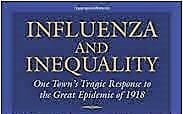
14
SepA Century Later – Norwood’s Experience in the 1918 Flu Epidemic
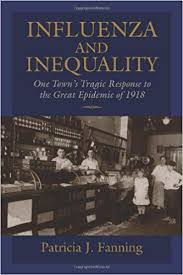 The Black Death (or Bubonic or Great Plague) was a four-year epidemic that affected 30-60% of the European population. It was critical to the history of the Middle Ages that we studied. The Great Plague is believed to have begun in Central Asia in the early 1330s where it was carried by rats on ships across and throughout the Mediterranean and Europe. It is believed to have killed up to 200 million people across Europe from 1347-1351 and it may have taken 200 years before the world’s population recovered from the loss of life from the epidemic.
The Black Death (or Bubonic or Great Plague) was a four-year epidemic that affected 30-60% of the European population. It was critical to the history of the Middle Ages that we studied. The Great Plague is believed to have begun in Central Asia in the early 1330s where it was carried by rats on ships across and throughout the Mediterranean and Europe. It is believed to have killed up to 200 million people across Europe from 1347-1351 and it may have taken 200 years before the world’s population recovered from the loss of life from the epidemic.
Many of us remember studying the Middle Ages and its Black Death in school. What we might not have learned was that there were many plagues throughout history.
The Bubonic Plague reappeared several times again in Europe, but not with the same devastating power. Pulitzer Prize author Geraldine Brooks wrote a startling and heartbreaking account of towns in England suffering from a 1600s plague and its shattering impacts on families, government, and society. The 2001 historical novel, Year of Wonders, is currently in film production.
In 1918, at the end of The Great War (or WWI) the Spanish Flu, or the Pandemic of 1918-1919, affected one-fifth of the entire world’s population. It killed more people than those who had died in the Great War. Somewhere around 20 million to 40 million people died in twelve months.
I don’t remember studying or hearing much about the Spanish Flu in America. Many of my aunts and uncles were alive in 1918 – and certainly my grandparents – and I heard no stories from them during their lifetimes. However, 28% of Americans were affected by the Spanish Flu and more than 675,000 died. The epidemic affected Americans between 20 and 40 years of old the most severely – more than 10 times the soldiers set to return to America from Europe died of the flu than who had died in the war.
Liz Reed, Adult Services Librarian here at our library in Norwood was recently awarded a Massachusetts Humanities Discussion grant to present Norwood’s experience with the pandemic of 1918. A Century Later: Norwood’s Experience in the Great Flu Epidemic of 1918 is a series of 8 events planned throughout the month of October. Several Town of Norwood departments have partnered with the Morrill Memorial Library – the Norwood Public Health Department, the Norwood Highland Cemetery, and the Norwood Senior Center. Also collaborating is the Norwood Historical Society.
Two of the events will focus on books. One was written by Norwood historian and retired professor, Patricia Fanning. Patti Fanning’s book, Influenza and Inequality, began as an academic study of the Town of Norwood’s response to the 1918 epidemic was published in 1910 by the University of Massachusetts. The Historical Journal of Massachusetts writes that “Historians once thought that the pandemic struck down its victims irrespective of class or ethnicity. [Patricia] Fanning dispels this error, demonstrating that immigrants and the poor died in Norwood in disproportionate numbers.”
The other book being discussed during the series, Pale Horse, Pale Rider is a novella by Katherine Anne Porter published in 1939. Porter’s novella depicts the tragedy and suffering in a story of Miranda, a newspaper woman in Denver, Colorado who is tended while sick and delirious from the influenza epidemic of 1918. Adam, a soldier who is also stricken with the flu dies while Miranda is recovering.
The series will begin with a discussion of Porter’s novella at the Day House in Norwood on Tuesday, October 2. Dr. Cashman Kerr Prince, library trustee and member of the Historical Society, will lead the event beginning at 6:30 pm.
On October 10 at 6:30 pm, Dr. Al DeMaria will present A History of Firsts: Public Health in the Commonwealth of Massachusetts. Dr. DeMaria is Medical Director of the Bureau of Infectious Disease and Laboratory Sciences and State Epidemiologist in the Massachusetts Department of Public Health. He is also President of the Massachusetts Infectious Diseases Society. He will lead us on a fascinating journey through the history of public health and disease in Massachusetts.
On Saturday, October 13 between 9 and 11 am, a flu vaccine clinic will be held at the Norwood Senior center. It is open to all residents 14 years or older and the Public Health Department requests that everyone who requests a vaccine bring their health insurance information.
On Monday, October 15 at 6:30 pm at the library, noted historian and author Anthony Sammarco will present Boston 1918: The Spanish Flu. He will lead participants on an exploration of Boston during World War I, the disease that decimated the world, and Boston’s response to the flu epidemic.
On Monday, October 22 at 6:30 pm at the library, author Patti Fanning and library director Charlotte Canelli will lead a discussion of Influenza and Inequality. Ms. Fanning will discuss Norwood’s tragic response to the pandemic that resulted in deaths that occurred in the pockets of Norwood where both the poor and immigrants lived in conditions that both spread the flu and did little to help its victims.
On Saturday, October 27 at 3:00 pm, Patti Fanning will lead a walking tour of Highland Cemetery, the resting place of many Norwood flu epidemic victims. The walk literally illustrates history as the steps of the grieving families and overwhelmed town officials will be retraced. There will be simultaneous flu vaccine clinic on the cemetery grounds courtesy of the Norwood Public Health Department. (Rain date is Sunday, October 28.)
This month-long series will end with the last program on October 29 at 6:30 pm at the library. Influenza 1918, a short documentary film produced by WGBH Boston will be shown. A discussion will follow, tying together personal stories with the historical events.
Registration for these events is available by calling or visiting the library or emailing norprograms@minlib.net. Books for both discussion groups will be available upon registration.
Once the program has ended, book clubs may request the Book Club Kit of Patti Fanning’s book, Influenza and Inequality from the Minuteman Library catalog. Please call the library for more information. We hope you will join us for this very historical, very relevant, very important series!
Charlotte Canelli is the Director of the Morrill Memorial Library in Norwood, Massachusetts. Read Charlotte’s column in the September 13, 2018 edition of the Norwood Transcript and Bulletin.
6
SepPodcast: Not the Same Old Radio Show
![]() Audio blogging, or podcasting, began in the 1980s. It wasn’t until the advent of broadband, mobile applications, and wide use of the Internet, though, that audiobloggers found a niche. Today there are 250,000 podcasts with one billion subscribers on iTunes. In 2004 the word podcast was invented – the word is a blend of the words iPod and broadcast. Podcast is both a noun and a verb. Defined, it is a digital audio file uploaded to the Internet.
Audio blogging, or podcasting, began in the 1980s. It wasn’t until the advent of broadband, mobile applications, and wide use of the Internet, though, that audiobloggers found a niche. Today there are 250,000 podcasts with one billion subscribers on iTunes. In 2004 the word podcast was invented – the word is a blend of the words iPod and broadcast. Podcast is both a noun and a verb. Defined, it is a digital audio file uploaded to the Internet.
I became a podcaster in 2006 after taking a class and uploading my first podcast to Podbean, a free podcast hosting site. My first podcast was a simply a one-episode thing and it was merely an assignment for a workshop I took through our regional library system. A few years later, I began reading and uploading audio versions of our library columns to another hosting service, SoundCloud. It became far too time-consuming and I abandoned the practice, leaving the digital files somewhere in the digital heavens.
So what’s this column about podcasts have to do with the library? While podcasts are free just like public libraries, you don’t need a library card to listen to them. You also don’t listen to them through any library apps. Podcasts aren’t available through our library catalog or digital subscriptions such as Hoopla and Flipster, and you don’t download them through Libby by OverDrive.
As a librarian, and as an enthusiastic podcast subscriber, I simply want you to know (if you don’t already) that a podcast is a beautiful thing. It’s free (mostly). Anyone can create one and upload one with very little equipment (depending on quality). And anyone can listen as long as they have a computer or device that is capable of listening to an audio file.
Podcasts are very much like the radio that some of us grew up with… or some of us didn’t. Beginning in the 1920s and through the 1930s and 1940s, my mother and father and grandparents gathered around the radio to listen to the news, plays, quiz shows and serial episodes. It was the heyday of the radio show. Commercially-sponsored shows, like the Voice of Firestone and Bell Telephone Hour, were weekly addictions. The C.E. Hooper Company measured the ratings of radio during this Golden Age and found that 82 out of 100 Americans listened to radio shows on a regular basis.
During my childhood, we only listened to the radio for the top 100, buying 78s and 45s to play on our record players. Our parents listened to Paul Harvey’s Rest of the Story and Golden Oldies before television took over in popularity through the 50s and 60s. In the 80s and 90s, however, many of us turned to public radio and were hooked on Prairie Home Companion (first aired in 1974 and now called Live from Here without association with Garrison Keillor), Car Talk (first aired in 1977), and This American Life (first aired in 1995). Most radio shows today can be subscribed to as podcasts – downloaded episodes to listen to at our leisure – or listened to in weekly radio broadcasts.
The main difference between a podcast and a radio show is that mainly radio is aired live, unlike podcasts which are recorded and are editable. Just like popular radio shows, successful podcasters have corporate sponsors or are part of the public radio family like National Public Media or local outlets. Some podcasters ask for donations on a website. One of my favorite podcasts asks for memberships, where members only can email questions or get first dibs on listening before the podcast is released.
I was subscribed to a few podcasts in 2014, and listened sporadically, but when the first season of Serial was released in October of that year, I became hooked. Serial was an offshoot of This American Life, a story that morphed into a 12-episode series and totally captured a host of fascinated listeners. The last episode aired in January 2015 when Serial had become a cultural phenomenon and now has been downloaded over one hundred and fifty million times.
Several years after Serial Season One ended, another amazing podcast, S-Town was released. There was no waiting for those of us who binge-listen because it hit the Internet in seven chapters, all at once on March 28, 2017 and within four days it was downloaded 10 million times. It was shocking, sad, poignant and addictive, and it ended far too soon.
As a regular podcast listener and subscriber, I listen to podcasts for education, entertainment and even relaxation. When having difficulty sleeping at night a few years ago, I often listened to Sleep with Me, a boring, monotonous hour-long podcast guaranteed to at least GET you to sleep. Host Scooter (Drew) Ackerman used late-night comedy radio to get to sleep every night. In 2013, he started podcasting “bedtime stories to help grown-ups fall asleep in the deep, dark night.” I can attest to the efficacy of Sleep with Me. However I find his voice maddening sometimes and have given up the habit of sleeping with Scooter Ackerman.
One of my favorite podcasts is Modern Love, produced in collaboration by NPR’s WBUR Boston and the New York Times and released every Thursday. (Host and journalist Meghna Chakrabarti is now also the host of NPR’s On Point, replacing host Tom Ashbrook.) Modern Love essays (from the column in the New York Times and written by professionals and amateurs) are read aloud by amazing actors like Jason Alexander or Sarah Oh. Everyone – writer, actor, Chakrabarti and Daniel Jones, NY Times editor, briefly discuss the essay’s impact and the podcasts typically last 15-20 minutes.
My latest podcast crush is Oligies (first taped in 2017) with actress Alie Ward. In her weekly podcast, Alie Ward discusses another “ology” with an expert in the field. Ferroequinology (study of trains), thanology (death and dying), selachimorphology (sharks) or malacology (snails and slugs are a few of her fascinating subjects. I am constantly amazed at how much I learn about things I never thought I had any interest in.
If you need help figuring out how to listen or subscribe to podcasts on your computers or devices using iTunes, Stitcher or other podcast aggregators, please call the library and make an appointment with one of the librarians who can help you.
Charlotte Canelli is the Director of the Morrill Memorial Library in Norwood, Massachusetts. Read Charlotte’s column in the September 6, 2018 edition of the Norwood Transcript and Bulletin.
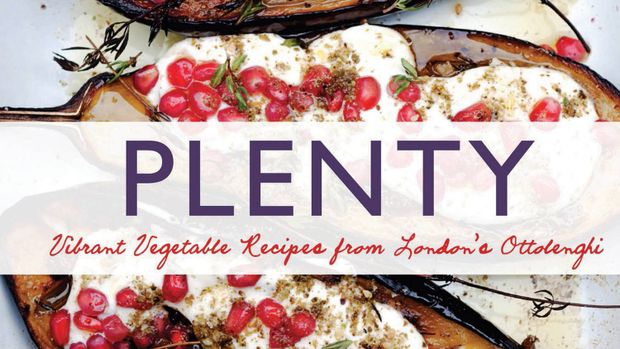
30
AugCook the Book: Falling Back in Love with Cookbooks
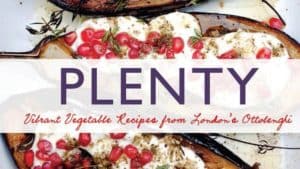 Once upon a time, I was an organized home cook. I planned our weekly menus for our meals at home, shopped for only fresh ingredients weekly, and did all my prep work in the mornings before work. Then I had a baby and all of my careful, well-honed organization went out the window. Gone were the days when I had time to flip through my cookbooks at a leisurely pace. I tried to make meal plans but then a baby wouldn’t stop crying and something would burn or a toddler interrupted me a thousand times before I could dice a shallot. Food shopping became a marathon exercise of half-remembered lists and saying “No, put that down; we don’t need that!”
Once upon a time, I was an organized home cook. I planned our weekly menus for our meals at home, shopped for only fresh ingredients weekly, and did all my prep work in the mornings before work. Then I had a baby and all of my careful, well-honed organization went out the window. Gone were the days when I had time to flip through my cookbooks at a leisurely pace. I tried to make meal plans but then a baby wouldn’t stop crying and something would burn or a toddler interrupted me a thousand times before I could dice a shallot. Food shopping became a marathon exercise of half-remembered lists and saying “No, put that down; we don’t need that!”
Like every aspect of motherhood, there was a learning curve. Feeding my family was essential but I had to figure out how I could get back to my love of cooking instead of just throwing something (rather unhealthy) together while feeling exhausted and underappreciated. One simple change has made a difference: time has passed. I no longer have a baby or a toddler but a nearly self sufficient elementary school aged child who loves to cook herself. My husband arrives home on the later side, so I feed my daughter earlier in the evening and he and I eat after bedtime, leaving me a little time to put something decent together.
I’ve tried several strategies. My first attempt to reawaken the love of cooking was signing up for Blue Apron, a delivery service that provided meal kits to be prepared at home. The recipes looked delicious and the ingredients were extremely fresh but I soon experienced a few downfalls. First of all, I couldn’t choose what meals would arrive in a given week. Some people like that type of variety, but I suppose I’m more of a creature of habit than I realized. I like to look forward to things, even meals. Secondly, many of the recipes had steps I deemed unnecessary. I remember angrily shelling edamame and thinking, “But I could have bought shelled edamame to begin with and saved time!” I have a decent amount of experience in the kitchen, and I automatically scan recipes to see how I can streamline steps to maximize my time. One of my key time savers is buying produce already prepared and ready to use.
Blue Apron didn’t last long and I had already set my sights on switching to Plated, another meal kit delivery service that allowed us to pick from thirteen recipes each week. I solved my first problem by giving myself more control over what we received each week. I also found that Plated recipes required less fuss with ingredient preparation. We had a few issues with the actual delivery that led us to cancel the service so I was back at square one with meal planning.
Now that my daughter is a little older, I’m feeling the tug towards my long-neglected cookbook collection. Since discovering a new delivery service through Amazon called Prime Now, I’m starting to entertain the idea of going back to traditional meal planning with an updated food shopping service. Simply create a shopping list on your Prime Now app and someone will shop FOR you at Whole Foods and then deliver the grocery order to your house. No more wrangling a cranky child and an unwieldy shopping cart. That freedom has helped me rediscover some of my old favorite recipes from the dusty cookbooks on my shelves.
Plenty by Yotam Ottolenghi was my first foray into non-traditional vegetarian cooking. Ottolenghi is a well-regarded British chef, restaurateur, and column writer for The Guardian. His philosophy about cooking vegetables made complete sense to me after I read an interview where he described the importance of recipes highlighting the flavor and properties of a vegetable, not trying to sell it as a meat substitute. Plenty takes this approach and does not pretend to try and turn hardcore meat eaters to veganism. It’s simply a great cookbook if you want interesting vegetable dishes that shine. My personal favorite recipes include Very Full Tart, Smoky Frittata, and Caramelized Fennel with Goat Cheese. My one recommendation with this cookbook is to watch cooking temperatures and time. I suspect Ottolenghi used his commercial grade kitchen when perfecting his recipes rather than a residential one and often food takes longer than he says it should.
On the opposite end of the cooking spectrum is Ina Garten, who probably needs no introduction. In case you have been living under a rock, Ina is a world famous Food Network host, chef, and former owner of the Barefoot Contessa shop in the Hamptons of Long Island. While some find her New York charm and insistence on “good” ingredients a little grating, I love that Ina never compromises on what’s important to her. The Barefoot Contessa: Back to Basics is filled with simple, tasty recipes and easy instructions. Ina is a home cook, so all of her recipes are usually very accurate and easy to make. Favorites like her Chicken Bouillabaisse take me back to a time before motherhood when I could spend several hours cooking every night and still remains my “date night in” specialty.
Now that fall is on the horizon, I find myself flipping through Molly Stevens’ classic Roasting. The oven is my secret weapon for mom-friendly recipes. I can quickly marinate or season a piece of meat with pre-chopped veggies while it preheats, and then walk away while everything roasts for 40 minutes. The house fills up with a delicious scent and I really feel as if I’ve made a good effort in the kitchen. Roasting is a master class in this, and Stevens’ chatty and detailed chapter introductions really help you master a technique rather than just one dish. When the cooler weather arrives, I love the comfort food appeal of Roasted Chicken Pieces Dijonnaise.
These three are only a few of my treasured collection! I’ve downsized a bit after several moves and have really only kept the cookbooks that contain recipes and techniques I truly love and use. I’m always on the hunt for new, tasty looking and well-written recipes, and frequently rifle through the library’s new nonfiction to see the latest cookbooks. I also love to wander in the library’s infamous “cookbook aisle” in the 600s on the mezzanine level. We have an unbelievable collection that could pull any home cook out of a slump.
Kate Tigue is the Head of Youth Services at the Morrill Memorial Library in Norwood, MA. Read Kate’s column in the August 30, 2018 edition of the Norwood Transcript and Bulletin.
